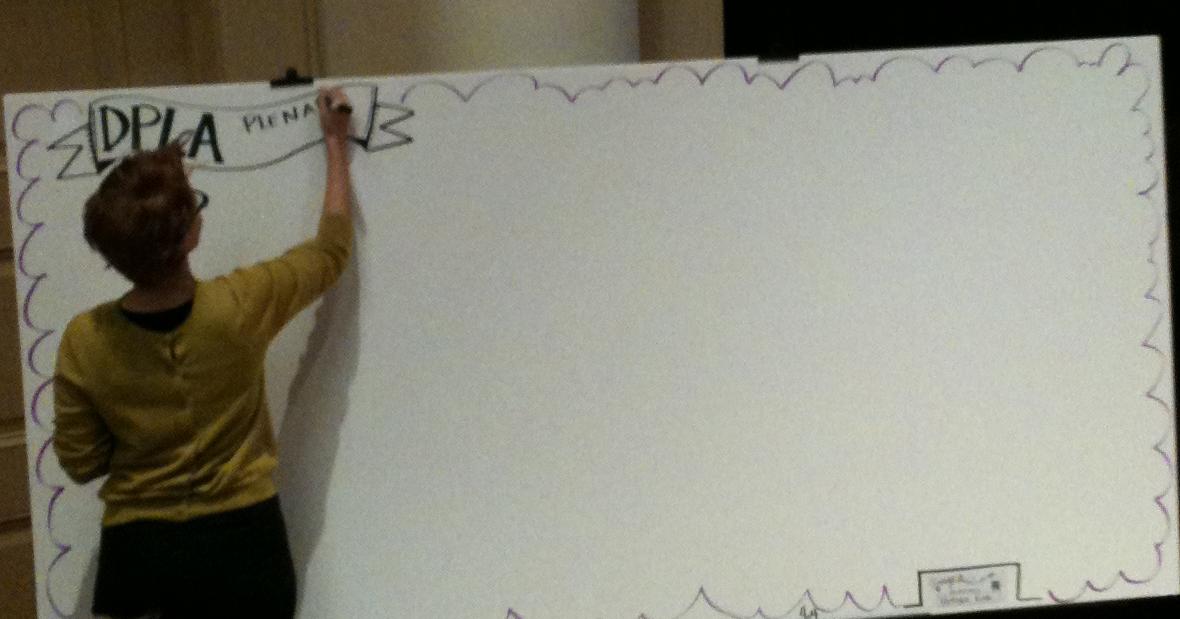“It’s a real pleasure welcoming you into my house this morning,” said David Ferriero, the Archivist of the United States, to the more than 300 attendees of the Digital Public Library of America (DPLA) plenary meeting at the National Archives in Washington, DC, October 21. The all-day meeting served as a forum for the major thinkers behind the digital library project, and was the site of several major announcements—including $5 million in funding, and a collaboration with Europe’s key digital library project.
The DPLA’s go-live target date is 18 months from now, in April 2013. And although the project is still financially, logistically, and technologically in the conceptual and planning phase, it has certainly generated plenty of enthusiasm. That excitement was palpable not only among the spectators, but also on the auditorium stage.
Big names in the library world spoke movingly of the importance of DPLA in a technologically changing environment. Ferriero said that he wanted to get everything in the National Archives digitized, because he was “firmly convinced that if it isn’t online, it doesn’t exist.” Carl Malamud of Public.Resource.org, in his speech [PDF], asked, “If we can put a man on the moon, why can’t we launch the Library of Congress into cyberspace?” Brewster Kahle, founder of the Internet Archive said, “We are in the process of building a digital America, and this project is a key component of it.”
John Palfrey, chair of the DPLA steering committee and codirector of Harvard University’s Berkman Center, spelled out a vision of the DPLA as not merely a place for content, but a destination for code, metadata, and other tools and services for libraries. He also said that some have criticized the expansiveness of DPLA—which started life as a Berkman Center project—saying that if the “tent is too big,” the project will fail. “I say that is wrong,” Palfrey said.
Looking ahead
But the meeting was not just about high-concept oratory. If anything, the meeting showed that the project was starting to truly shift from the abstract to the concrete.
Indeed, a major announcement of the day was about such a “big tent”collaboration—helping to expand the scope of the DPLA beyond America itself. It came from Jill Cousins, the program director for Europeana, the European digital-library project that began aggregating some five million digital objects from European university and research libraries last month. Europeana and DPLA, she said, would work together to promote interoperability between the two projects.
Another clear movement forward was new funding, announced earlier in the day. The Alfred P. Sloan Foundation and the London-based Arcadia Fund each announced $2.5 million grants for the DPLA for the next 18 months. The Sloan Foundation had provided $125,000 in initial support for the DPLA last year, while the Arcadia Fund is known for its library-related funding, including three $5 million grants to the libraries at UCLA, Yale, and Harvard in 2009.
Talking tech infrastructure
The technological potential for DPLA was highlighted in rapid-fire “beta spring” tech presentations, which include a wide range of possible ways to tackle the technical needs of a massive digital library. As LJ reported in September, the brief presentations were intended to “demonstrate how the DPLA might index and provide access to a wide range of broadly distributed content.” One highlight was extraMUROS, an intriguing project from metaLAB (at) Harvard, the Harvard Library Lab, and Media And Place (MAP) Productions. The tool, built on an open source HTML5 platform, draws on a variety of open application programming interfaces (APIs) to create a potentially powerful discovery tool for multimedia collections:
DPLA tech is still largely theoretical for now, however, as there is still plenty of organizational work to be done for the project as a whole. This was clearly shown in the final panel, which consisted of members of the six DPLA “workstreams,” each covering a different aspect of DPLA planning: Audience & Participation; Content & Scope; Financial/Business Models; Governance; Legal Issues; and Technical Aspects. Each member on the panel, which included Institute of Museum and Library Services director Susan Hildreth and ITHAKA president Kevin Guthrie, shared the draft mission statement of its workstream, and spoke briefly about its overall goals.
The Smithsonian Institution’s Martin Kalfatovic of the Technical Aspects workstream summed up the mood of the day when discussing the technical direction of DPLA: “The killer app will be openness and interoperability,” he said.
Indeed, openness was a common theme of several other speakers throughout the day. And although it’s early days yet for the DPLA, a digital library embracing an philosophy of openness will be welcome to many librarians—in America, and around the world.
[An archived streaming video of the meeting may be viewed here.]




[…] interest, too: Library Journal’s David Rapp on the DPLA meeting, as well as LJ Editor Francine Fialkoff’s account of a DPLA-related meeting at Columbia […]